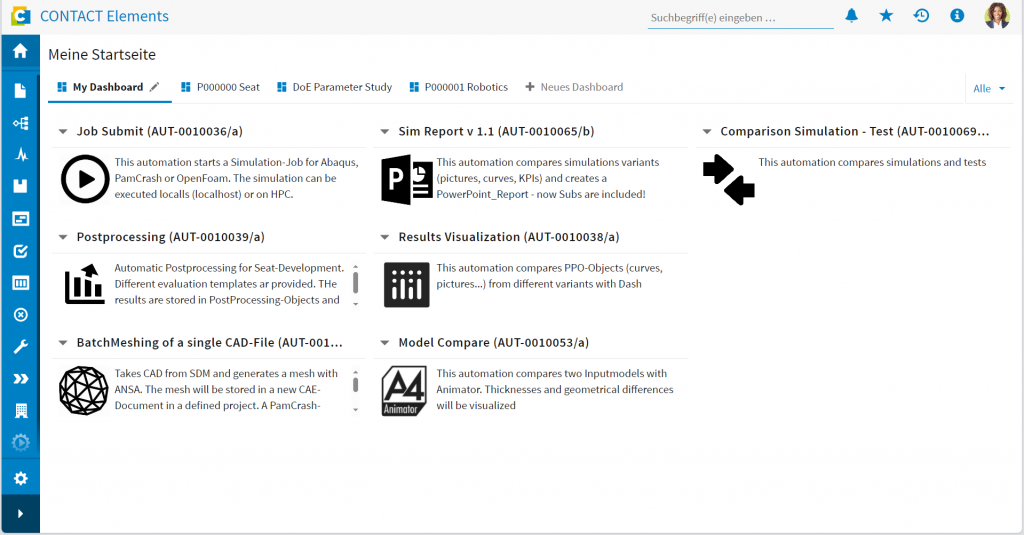How Cloud PLM systems ensure data security on the highest level
As technology advances at a rapid pace, product life cycles become shorter, and the amount of digital information grows exponentially, companies face the challenge of managing their product life cycle data in a more effective manner. Consequently, more and more companies are turning to Cloud PLM systems that enable them to access data from anywhere and at any time. While the benefits of a cloud solution outweigh the drawbacks, there are still concerns. Specifically, about whether the data in the cloud is secure. In this article, we delve into the advantages of cloud-based PLM systems and demonstrate that solutions adhering to current security standards and requirements offer the highest level of data security and can be significantly more reliable than locally operated systems.
Security benefits of Cloud PLM compared to locally installed PLM systems
In a Software-as-a-Service (SaaS) model, cloud service providers are responsible for maintaining security features in the application and ensuring the confidentiality, integrity, and availability of data. They also ensure compliance with current cybersecurity standards, regularly update the software to address new security risks and vulnerabilities, and continuously monitor the system for potential threats. When it comes to security, most companies do not have sufficient resources to make investments in hardware, infrastructure, and personnel comparable to the major cloud providers.
Thanks to economies of scale, cloud administrator teams operate more efficiently and with greater specialization compared to administrators of an on-premises installation. As a result, routine tasks such as updates and maintenance are reduced for internal IT teams, allowing them to focus more on their day-to-day operations, such as user satisfaction, implementing new IT features, and company-specific IT security matters.
Security measures of Cloud PLM providers
To ensure that data is fully protected, cloud applications should adhere to current best practices and comply with all relevant regulations regarding cybersecurity in the cloud. Five measures have become widely established in this regard:
1. High-security data centers and encryption
Cloud PLM providers rely on highly secure data centers equipped with state-of-the-art security technology. These data centers provide physical protection, access control, and active monitoring around the clock. Additionally, all data stored in the cloud is protected by cutting-edge encryption technologies. In the highly unlikely event of a security incident, the data remains unreadable to unauthorized parties.
2. Access control and permissions
Cloud PLM systems offer precise control over who can access the data. Assigning individual permissions at the user level ensures that only authorized users have access to specific data and functions. Administrators have the option to define user roles themselves and assign individual permissions. This ensures that employees can only access information relevant to their work.
3. Regular security updates and maintenance
Cloud providers perform regular security updates and maintenance to promptly address potential vulnerabilities and keep the systems up to date. This ensures that Cloud PLM systems are constantly protected against current threats.
4. Redundancy and disaster recovery
Another crucial aspect of data security in the cloud is redundancy and disaster recovery. Cloud providers store their data in distributed data centers at multiple locations and conduct systematic and professional backups. This provides protection against data loss due to hardware failures or in the event of a disaster.
5. Compliance and certifications
To meet the highest security standards and ensure the confidentiality, integrity, and availability of data, cloud providers should adhere to compliance guidelines and certifications. One notable standard in this field is ISO 27001. It provides a framework for establishing, implementing, maintaining, and continually improving security management systems, procedures, and policies. Depending on the region and industry, other certifications may also be relevant.
Humans – a factor of (in)security
Once a company has chosen a suitable cloud-based PLM system and selected a cloud service provider that adheres to all best practices for data security in Cloud applications, the first major step towards data security is taken. However, to ensure maximum security, another important element is needed: the training of the company’s employees.
The security of data in PLM systems largely depends on the conduct and expertise of the employees. Therefore, it is crucial that they undergo regular IT security training. These trainings should teach employees how to recognize phishing attacks, suspicious emails, malware, and questionable links in order to prevent unauthorized access. Employees must also be sensitized to report suspicious incidents to protect themselves and their colleagues.
Cloud PLM systems with document management and an integrated communication tool significantly reduce the risk of encountering insecure emails or links, as communication takes place in a protected environment. Encouraging users to utilize such features directly contributes to enhanced security.
Furthermore, it is of great importance that employees are trained on how to securely handle confidential data and strictly adhere to the company’s privacy policies in order to prevent data breaches.
Conclusion
Cloud-based PLM systems offer you the highest level of data security through the use of encryption, access control, regular updates, redundant data storage, and the compliance standards of cloud service providers. Still, the security of your PLM system data also depends on the behavior of your employees to a large extent. Regular IT security training is essential to ensure that users are aware of current threats.
Take advantage of the many benefits of cloud-based PLM software now: With CIM Database Cloud, you get a secure solution to protect your sensitive product development data.





